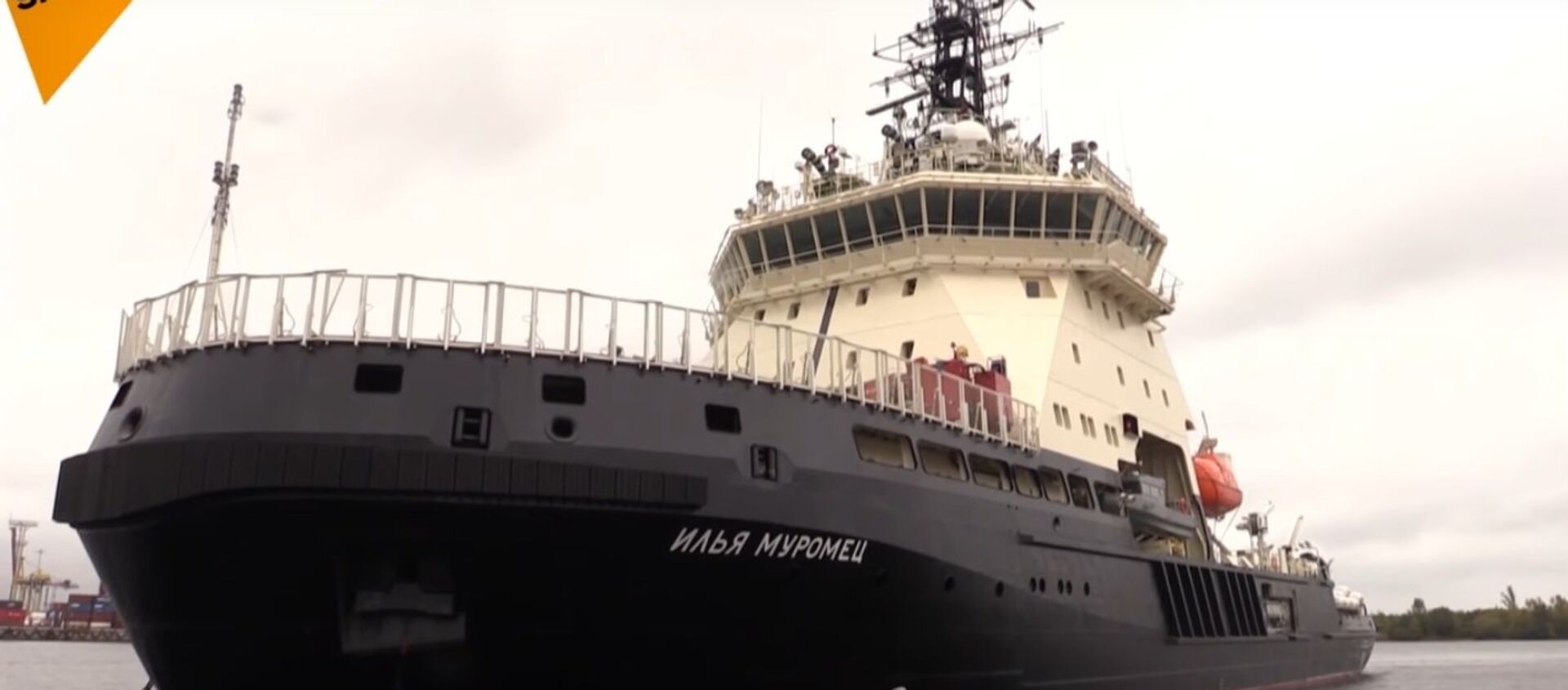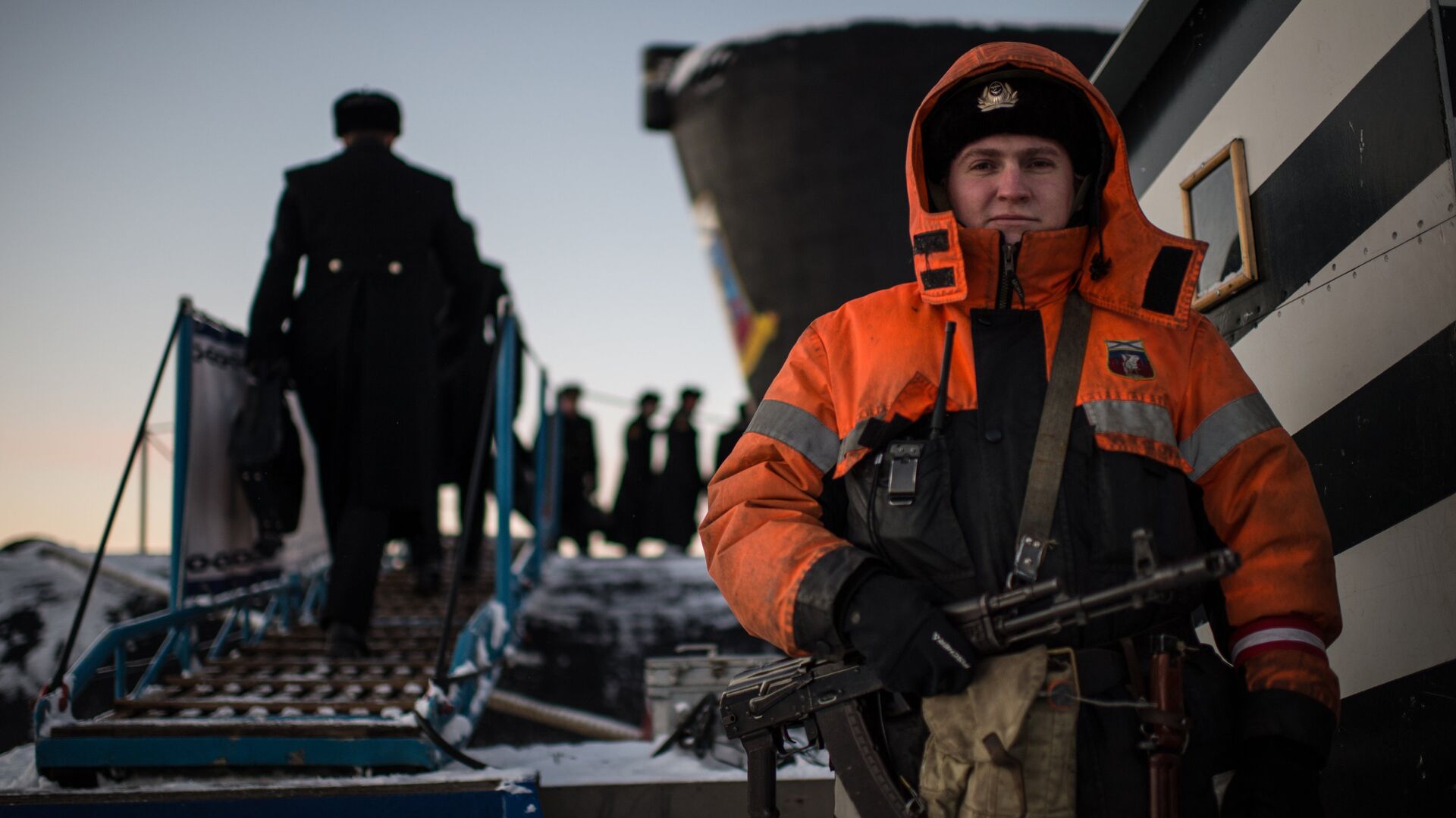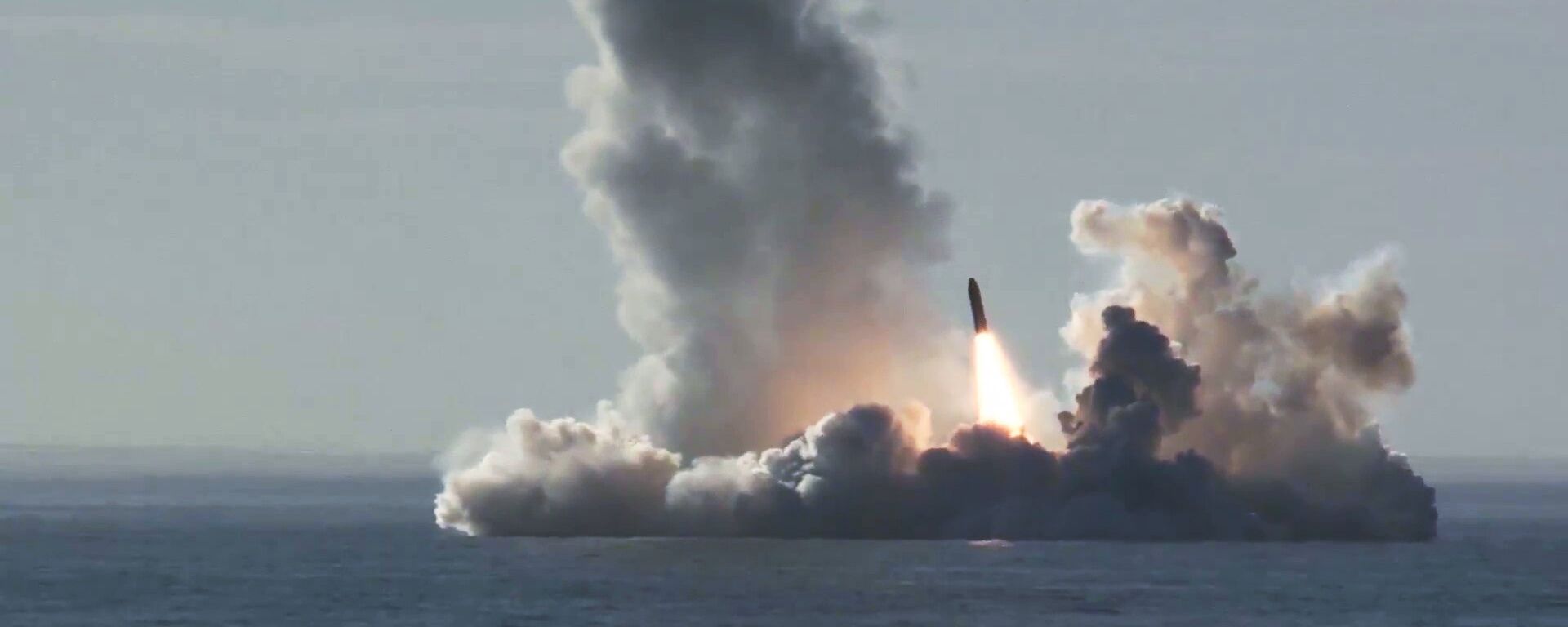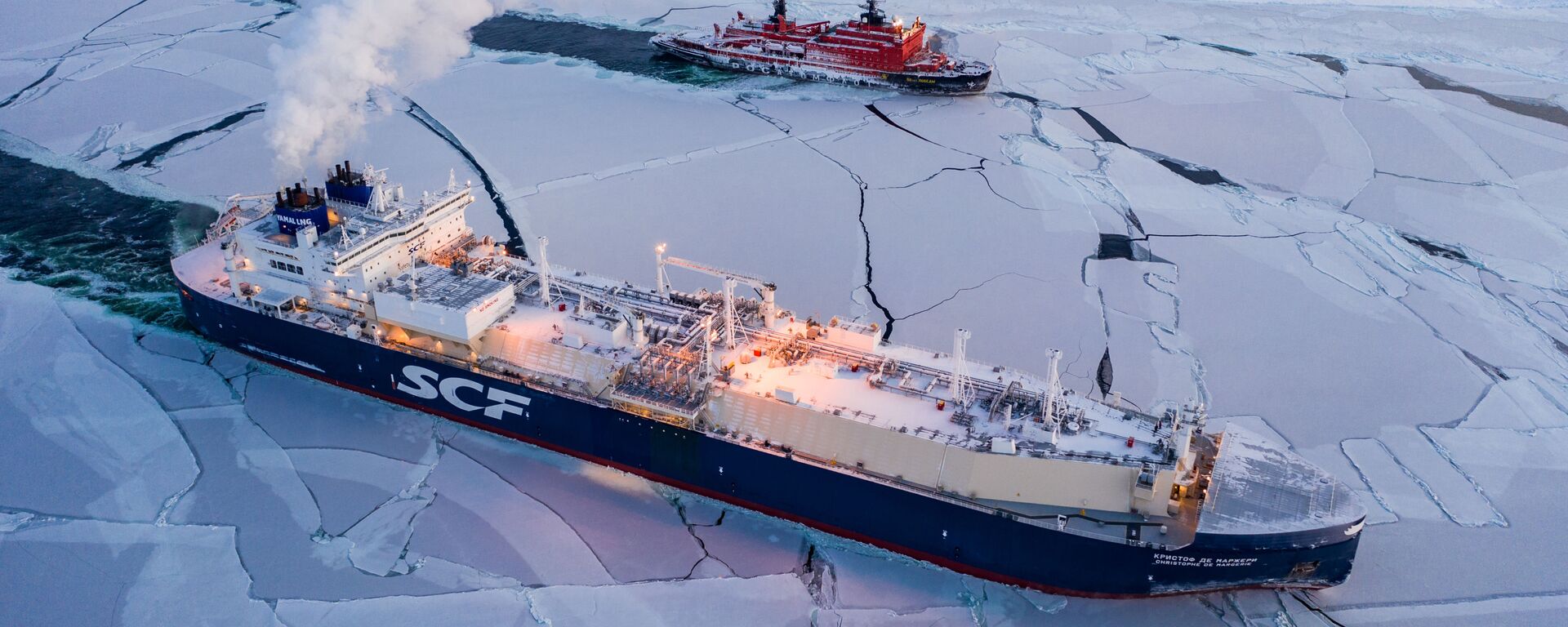https://sputnikglobe.com/20240601/how-northern-fleet-guards-russias-arctic-as-new-cold-war-heats-up-1118740169.html
How Northern Fleet Guards Russia’s Arctic as New Cold War Heats Up
How Northern Fleet Guards Russia’s Arctic as New Cold War Heats Up
Sputnik International
Saturday is the professional holiday of the Northern Fleet – the Russian naval grouping protecting Russia’s Arctic frontiers, and ensuring part of the maritime component of its nuclear triad. Sputnik asked Russian Navy Captain 1st Rank (ret.) and Northern Fleet veteran Vasily Dandykin what makes this fighting force unique.
2024-06-01T17:51+0000
2024-06-01T17:51+0000
2024-06-01T17:54+0000
military
military & intelligence
russia
arctic
nato
russian navy
northern sea route
bulava
ilya muromets
https://cdn1.img.sputnikglobe.com/img/106268/47/1062684785_0:160:3076:1890_1920x0_80_0_0_9f6d8b83067d1ba34604370ed40c845d.jpg
Russia began its foray into the waters of the frozen north under Czar Peter the Great, establishing its first naval base in Arkhangelsk in 1733. The fleet’s modern iteration was created on June 1, 1933 as the Northern Military Flotilla, gained its fleet status in 1937.In its nearly 300 years of existence, the Northern Fleet has played a crucial role in Russia’s defense, taking part in hostilities during the First and Second World Wars, staring down US armadas during the Cold War, and standing on guard against Washington and NATO a second time today amid the ongoing proxy conflict in Ukraine.The Northern Fleet shares the trophy of most powerful Russian naval formation with the Pacific Fleet. Both are tasked with not only conventional defense in the waters they are assigned to guard, but with providing guaranteed deterrence against a enemy nuclear aggression, with their fleets of nuclear submarines virtually impossible to trace and eliminate before firing their payloads in the event of an aggressor’s first strike.The fleet has over 70 surface warships and submarines at its disposal, including Russia’s only aircraft carrier – the Admiral Kuznetsov, missile cruisers, destroyers, frigates, minesweepers, landing ships large and small, patrol vessels, strategic missile submarines, and cruise-missile-armed subs, both nuclear and diesel-powered. In addition, the fleet has more than a dozen support ships, from tankers and floating repair bases to search and rescue, hospital ships, and reconnaissance vessels, as well as the 6,000-ton Ilya Muromets heavy duty icebreaker.In line with the heightened attention provided to the Arctic by the Russian state over the past two decades amid warming Arctic temperatures, the creation of the Northern Sea Route and the thawing of previously inaccessible natural resource riches, the Northern Fleet has been prioritized for the adoption of many of Russia’s newest surface warships and subs.In late December 2023, the 5,400 ton Admiral Gorshkov-class Admiral Golovko frigate joined the Northern Fleet, bristling with vertical launch cells that can fire Oniks, Zircon and Kalibr anti-ship and land attack cruise missiles, Redut air defenses, Palash close-in weapon systems, and 330 mm tubes for Russia’s new Paket-E/NK torpedo.In 2022, the Belgorod – a new special drone mothership sub derived from the Project 949A Antey series of cruise missile boats, was added to the Northern Fleet with 4-6 Poseidon tsunami-causing unlimited range nuclear drones onboard.Later this year, the Borei-A-class strategic missile submarine Knyaz Pozharskiy is expected join the Northern Fleet, bringing the total number of these Bulava missile-launching boats to three (with three more still to come).The Northern Fleet is “operational-strategic” fleet, says retired Russian Navy Captain 1st Rank Vasily Dandykin, commenting on the many tasks assigned to the naval fighting formation.“It is responsible for the security of our entire Arctic – from the Kola Peninsula to the Bering Strait, where the Pacific Fleet takes over. This is a very large amount of coastline,” Dandykin, who served in the Northern Fleet himself back in Soviet days, told Sputnik.On top of that are the Northern Fleet’s surface components, which in addition to missile-armed warships including the Admiral Golovoko, Admiral Kasatonov and Admiral Gorshkov include Naval Infantry, naval aviation and air defenses, Dandykin said.Celebrated Past, Vital Mission in the PresentEvoking the Northern Fleet’s glorious past, Dandykin recalled that it fell to its sailors and officers to help escort the Western Allies’ Atlantic convoys during the Great Patriotic War, hunt for enemy submarines and man island garrisons during the long, dark and difficult Arctic winters.Fast forward to the present, and the Northern Fleet has become a kind of “talent foundry” for the entire Russian Navy, generating many of its most talented and decorated commanders, including the current Commander-in-Chief of the Navy, Alexander Moiseyev, who joined the Northern Fleet straight out of the naval academy as a submariner in the 1980s.Like no time before in Russia’s modern history, it needs a strong Northern Fleet capable of outmatching US and NATO machinations in the Arctic, Dandykin says.It’s fitting that sailors of the Northern Fleet today are tasked with defending Russia’s northernmost approaches, Dandykin said, given that their forefathers were pioneers in the discovery and mapping of the waters they are now tasked with defending going back to the Imperial and Soviet periods.Dandykin is confident that the personnel and military equipment assigned to Russia’s Northern Fleet today far out match the any and all potential adversaries in terms of “experience, nerves and combat potential.”Nothing else would do in circumstances of the warming competition for the frozen north.
https://sputnikglobe.com/20171007/russia-ilya-muromets-icebreaker-1058030787.html
https://sputnikglobe.com/20240515/backbone-of-russias-naval-nuclear-deterrent-what-we-know-about-bulava-missile-1118446025.html
https://sputnikglobe.com/20240523/potential-northern-sea-route-projects-with-india-under-discussion---rosatom-says-1118600882.html
russia
arctic
Sputnik International
feedback@sputniknews.com
+74956456601
MIA „Rossiya Segodnya“
2024
News
en_EN
Sputnik International
feedback@sputniknews.com
+74956456601
MIA „Rossiya Segodnya“
Sputnik International
feedback@sputniknews.com
+74956456601
MIA „Rossiya Segodnya“
how strong is russia's northern fleet, what ships does russia's northern fleet have, when was russia's northern fleet created
how strong is russia's northern fleet, what ships does russia's northern fleet have, when was russia's northern fleet created
How Northern Fleet Guards Russia’s Arctic as New Cold War Heats Up
17:51 GMT 01.06.2024 (Updated: 17:54 GMT 01.06.2024) Saturday is the official holiday of the Northern Fleet – the Russian naval grouping protecting Russia’s Arctic frontiers, and ensuring part of the maritime component of its nuclear triad. Sputnik asked Russian Navy Captain 1st Rank (ret.) and Northern Fleet veteran Vasily Dandykin what makes this fighting force unique.
Russia began its foray into the waters of the frozen north under Czar Peter the Great, establishing its first naval base in Arkhangelsk in 1733. The fleet’s modern iteration was created on June 1, 1933 as the Northern Military Flotilla, gained its fleet status in 1937.
In its nearly 300 years of existence, the Northern Fleet has played a crucial role in Russia’s defense, taking part in hostilities during the First and Second World Wars, staring down US armadas during the Cold War, and standing on guard against Washington and NATO a second time today amid the ongoing proxy conflict in Ukraine.
The Northern Fleet shares the trophy of most powerful Russian naval formation with the Pacific Fleet. Both are tasked with not only conventional defense in the waters they are assigned to guard, but with providing guaranteed deterrence against a enemy nuclear aggression, with their fleets of nuclear submarines virtually impossible to trace and eliminate before firing their payloads in the event of an aggressor’s first strike.
The fleet has over 70 surface warships and submarines at its disposal, including Russia’s only aircraft carrier – the Admiral Kuznetsov, missile cruisers, destroyers, frigates, minesweepers, landing ships large and small, patrol vessels, strategic missile submarines, and cruise-missile-armed subs, both nuclear and diesel-powered. In addition, the fleet has more than a dozen support ships, from tankers and floating repair bases to search and rescue, hospital ships, and reconnaissance vessels, as well as the 6,000-ton Ilya Muromets heavy duty icebreaker.

7 October 2017, 13:07 GMT
In line with the heightened attention provided to the Arctic by the Russian state over the past two decades amid warming Arctic temperatures, the creation of the
Northern Sea Route and the thawing of previously inaccessible natural resource riches, the Northern Fleet has been prioritized for the adoption of many of Russia’s newest surface warships and subs.
In late December 2023, the 5,400 ton Admiral Gorshkov-class Admiral Golovko frigate joined the Northern Fleet, bristling with vertical launch cells that can fire Oniks, Zircon and Kalibr anti-ship and land attack cruise missiles, Redut air defenses, Palash close-in weapon systems, and 330 mm tubes for Russia’s new Paket-E/NK torpedo.
In 2022, the Belgorod – a new special drone mothership sub derived from the Project 949A Antey series of cruise missile boats, was added to the Northern Fleet with 4-6
Poseidon tsunami-causing unlimited range nuclear drones onboard.
Later this year, the Borei-A-class strategic missile submarine Knyaz Pozharskiy is expected join the Northern Fleet, bringing the total number of these Bulava missile-launching boats to three (with three more still to come).
The Northern Fleet is “operational-strategic” fleet, says retired Russian Navy Captain 1st Rank Vasily Dandykin, commenting on the many tasks assigned to the naval fighting formation.
“It is responsible for the security of our entire Arctic – from the Kola Peninsula to the Bering Strait, where the Pacific Fleet takes over. This is a very large amount of coastline,” Dandykin, who served in the Northern Fleet himself back in Soviet days, told Sputnik.
“This includes ensuring the security of the Northern Sea Route, islands. And that’s not counting the Northern Fleet’s missions to the Atlantic, the Mediterranean, and if needed, any seas or oceans anywhere in the world, because its capabilities relative to other fleets are much greater. Then of course there are the naval nuclear forces, including submarines from Projects Borey and Borey-A, and the 667BDRM Delfin project, which have Bulava and Sineva missiles onboard. The fleet also includes multipurpose subs capable of fighting enemy naval groups, including Yasen and Yasen-M subs – the first of which arrived in Severodvinsk precisely to the Northern Fleet.”
Vasily Dandykin
Russian Navy Captain 1st Rank (ret.)
On top of that are the Northern Fleet’s surface components, which in addition to missile-armed warships including the Admiral Golovoko, Admiral Kasatonov and Admiral Gorshkov include Naval Infantry, naval aviation and air defenses, Dandykin said.
Celebrated Past, Vital Mission in the Present
Evoking the Northern Fleet’s glorious past, Dandykin recalled that it fell to its sailors and officers to help escort the Western Allies’ Atlantic convoys during the Great Patriotic War, hunt for enemy submarines and man island garrisons during the long, dark and difficult Arctic winters.
Fast forward to the present, and the Northern Fleet has become a kind of “talent foundry” for the entire Russian Navy, generating many of its most talented and decorated commanders, including the current Commander-in-Chief of the Navy, Alexander Moiseyev, who joined the Northern Fleet straight out of the naval academy as a submariner in the 1980s.
Like no time before in Russia’s modern history, it needs a strong Northern Fleet capable of outmatching US and NATO machinations in the Arctic, Dandykin says.
“The situation in the Arctic is tense today. The United States considers the Northern Sea Route and the Russian sectors of the Arctic to be ‘international waters’ – in other words, American. With Finland and Sweden joining NATO, the situation has become even worse. Therefore, the sailors of the Northern Fleet have a lot of work to do,” the observer stressed.
It’s fitting that sailors of the Northern Fleet today are tasked with defending Russia’s northernmost approaches, Dandykin said, given that their forefathers were pioneers in the discovery and mapping of the waters they are now tasked with defending going back to the Imperial and Soviet periods.
Dandykin is confident that the personnel and military equipment assigned to Russia’s Northern Fleet today far out match the any and all potential adversaries in terms of “experience, nerves and combat potential.”
Nothing else would do in circumstances of the warming competition for the frozen north.





